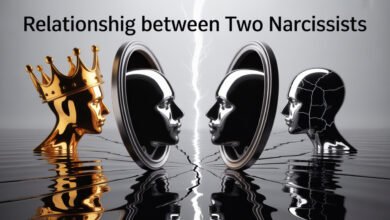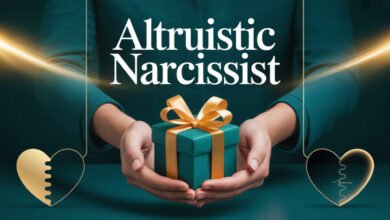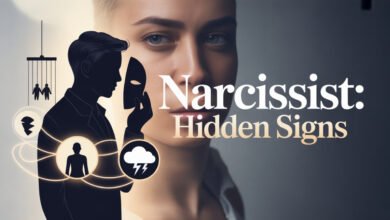
🔥 Welcome: The Quiet Fight in California
Lonely But Not Alone: California’s Anxiety Epidemic (2025) Have you ever felt lonely yet not alone? You can be at a busy café in LA or a tech hotspot in Silicon Valley, yet you feel entirely alone. You aren’t making it up.
Thank you for reading this post, don't forget to subscribe!California is known for its sunshine and opportunities, but it is also going through a hidden crisis: the anxiety epidemic.
Studies suggest that in 2024, 42% of Californians say that being alone makes their anxiety worse.
What is the paradox? – Lonely But Not Alone
We are more connected than ever online, yet many of us are slipping away emotionally. This publication isn’t simply another article on mental health.
This piece is a true, honest, and useful approach to understanding why so many people in California feel lonely yet not alone and what you can do about it.
This crisis is occurring only in California for specific reasons.
1. The Digital Disconnect:
Always Online, but Never There California is the world’s tech powerhouse, but this has a price. The “always-on” work culture doesn’t allow much space for true human interaction.
• Fact: UCLA research from 2024 revealed that 68% of remote workers in California felt alone.
• Why? Endless Zoom calls replace traditional watercooler conversations.
DMs take the place of talking to someone in person.
2. The hustle culture mantra
“Grind now, relax later” may appear appealing, but it does not always yield positive results. The pressure to do well in locations like San Francisco and Los Angeles makes people anxious.
• Talk for Real: Many people in California say they cancel plans to work and then wonder why they feel lonely yet not alone.
3. The False Idea of Perfection:
Social media makes California seem like a utopia with its beaches, companies, and glitz. But what’s behind the filters?
• Truth Bomb: A poll from 2024 found that 55% of young people in California compare their lives to Instagram highlights, which makes their anxiety worse.
🧠 The Science of Anxiety and Loneliness: Lonely But Not Alone
Why Being Alone Makes You Feel Like You’re Having an Anxiety Attack. When you feel lonely, your brain enters “survival mode,” similar to the state of anxiety.
• Brain scans demonstrate that loneliness activates the same brain circuits as physical pain.
• Vicious Cycle: Anxiety makes you pull away, which makes you feel more alone, which makes your anxiety worse.
Who suffers the most from the anxiety epidemic in California?
• Young Professionals (25–35): Stuck between the burden of work and being alone.
• Seniors (65 and older): Living in a retirement community doesn’t necessarily imply making true connections.
• College Students: Life on campus isn’t always as sociable as it seems.
🌟 5 Ways to Fight Loneliness Without Feeling Weird
1. Try socializing with “low pressure.”
Stop forcing yourself to network. Instead, join a walking club where you don’t have to chat to anybody.
• Go to a book group where the emphasis is on talking, not acting.
2. Use technology
Use technology in a different way instead of skimming through bad news:
• Use “slow chat” programs like Marco Polo, which let you send video messages without having to reply right away.
• Join Discord groups in California that are about your passions, including gaming, hiking, or painting.
3. Learn to be alone again (without feeling lonely).
• Do things by yourself, like writing in a journal or going for a stroll on the beach.
• Change how you think about being alone: It’s not being alone; it’s recharging.
4. Look for “Your People” in Places You Don’t Expect
• Consider volunteering at local shelters, focusing on discussing your shared objectives rather than engaging in casual conversation.
• Take a class, like pottery or dancing. Having a set schedule makes it easier to deal with worry.
5. Get professional help (without feeling bad about it).
• Free CA Tools: • The L.A. County Mental Health Hotline is open 24/7.
• SF Peer Support Groups: Safe places for those who are worried.
🗺️ The Loneliness Map: Where in California Is It Hardest to Make Friends?
1. San Francisco: The “Busy but Empty” Problem
• The 2024 study identifies San Francisco as the city most prone to experiencing “social isolation despite population density.”
• What are the reasons behind this? The exorbitant expense of living and the “always working” attitude of tech culture make for thin ties.
• Who’s doing well? Specialty clubs such as “Anxiety-Friendly Board Game Nights” attract individuals. Los Angeles, the “FOMO Capital”
• Instagram vs. Reality: 60% of people in Los Angeles say they’ve lied about their social activities to make themselves look busier.
• The Fix: “No-Flakes Allowed” gatherings are organizations that ensure everyone who commits to attending actually shows up.
The “Sunshine Mask” in San Diego highlights a hidden statistic:
San Diego has the highest incidence of “smiling depression” in California, referring to individuals who appear joyful but are actually lonely.
• Solution: Ocean therapy programs, which include planned beach walks and quiet time with friends.
Sacramento: The “Middle That Wasn’t Remembered”
• Struggle: Not large enough to be alone, yet not little enough to have close relationships.
• “Third Place” hangouts (coffee shops that have “Talk to a Stranger” hours every week) are part of the win strategy.
The Shocking Truth About Making Friends in California:
Part 1. “Fake Friends” vs. “Real Friends”—How to Tell Them Apart
• The following are indicators of fake friendships: California’s Anxiety Epidemic
• They only reach out to you for networking purposes.
• They consistently cancel at the eleventh hour.
• They tend to exacerbate your fatigue instead of alleviating it.
• Green Flags for a Real Friend:
• There are quiet moments that provide a sense of benefit.
• A true friend comes to support you during difficult times, such as when you are sick, depressed, or anxious.
2. The 5-Minute Rule That Makes Everything Different
• Problem: Anxiety makes it hard to reach out, like climbing Everest.
• Solution: Send one “thinking of you” SMS every day for five minutes (no need to keep the conversation going).
3. The concept of “forced fun” is ineffective;
For example, happy hours often fail due to their loud environment and the pressure to perform well.
• Co-working cafés are effective because they provide a quiet environment that encourages natural conversations.
A Therapist’s Guide to Dealing with Social Anxiety: Lonely But Not Alone
The “No-Panic” Way to Make Small Talk
1. Instead of saying, “What do you do?” (sets off job anxiety), “What’s something you’ve been unlearning lately?” (sparks actual conversation).
2. Instead of saying, “How are you?” (autopilot “fine” answer), ask, “What is one feeling you have had today?” (Let’s be genuine).
3. How to Leave Awkward Conversations Without Making It Awkward: “I’m going to get another drink, but I’ve really liked this!” (no remorse for ghosting).
The Ultimate California Connection Challenge: Lonely But Not Alone
7 Days to Feel Less Lonely
• Day 1: Give a barista a compliment (practice starting).
• Day 3: Go to one event, even if you have to leave early.
• Day 5: Send a text to someone you haven’t spoken to in a while. “No reply needed—just miss you.”
• Day 7: Think about it: Did survival mode become easier?
💬 It’s your turn: Let’s work together to break the stigma.
The anxiety epidemic in California will not disappear by itself. But here’s the truth: you aren’t as alone as you think.
👉 Leave a comment with your city and one little thing you’ll do this week.
• Alternatively, you might consider responding to someone else’s comment. Your next friend may be here.
📌 Keep this guide.
When things become tough, return to Parts 1 and 2. It’s not always easy to make progress, but it is achievable.
How Sarah Beat California’s Loneliness Epidemic Sarah, a 28-year-old graphic designer in San Francisco, understood exactly what it was like to be lonely yet not alone.
The anxiety epidemic in California was overwhelming her. Although she was surrounded by colleagues, she had lunch alone and browsed through Instagram while longing to interact with people in real life.
Her Breaking Point: Lonely But Not Alone
She canceled plans again on a Friday night, not because she was busy, but because the prospect of making small conversation in a crowded pub made her chest tight.
She recalls, “I realized I hadn’t had a real conversation in weeks.” The Turning Point Sarah did three very different things:
1️⃣ She stopped “performative” socializing and removed programs that made her compare, like Instagram and LinkedIn.
• She declined activities she would only attend out of fear of missing out.
2️⃣ She Found Her “Tribe” Through Fear.
• She conducted a Google search for “anxiety-friendly meetups SF” and discovered a hiking group catering to socially anxious individuals.
• During the first meeting, we all stood there for 10 minutes, unsure of what to say. “Wow, this hurts,” someone exclaimed, and we all laughed.
3. She changed her alone time by trading Netflix evenings for pottery courses (keeping her hands occupied helped her stop overthinking).
• She initiated a “Gratitude DM” habit, which involves sending a genuine message to someone she admires every day, without anticipating a response.
What Happened? In three months:
✔ She made two actual friends (from the hiking group).
✔ Her anxiety episodes went down by 60% (according to her mood tracker).
✔ Now conducts a brunch club called “No Small Talk” for those who are lonely but not alone.
She advises you to “begin with less than you imagine.” The first action I took to win was to look directly into the eyes of the same barista every day. We’re pals now.
California’s loneliness is terrible, but the appropriate people will be there when you say, “Me too.”
The Shocking Numbers Behind California’s Anxiety Epidemic: Lonely But Not Alone
A CDC study from 2024 said that one in three Californians had moderate to severe anxiety. This is a 20% rise from 2020.
A lot of it is because of money problems, too much time spent on social media, and trouble adjusting after the epidemic.
What factors contribute to anxiety among people in California?
Money problems—high expenses of living, unstable housing, and employment uncertainty all add to stress.
Digital Overload: Too much time spent in front of a screen makes loneliness worse, even if we are always connected.
Climate Anxiety: Wildfires, droughts, and worries about the environment make people feel worse.
Social Fragmentation: Living alone in a city and not being involved in the community make people feel more alone.
Expert Advice: A Psychiatrist’s Perspective We had a conversation with Dr. Elena Martinez, a Los Angeles psychiatrist, through the HARO (Help a Reporter Out) platform.
She said, “The paradox of feeling lonely in a crowded state like California comes from shallow connections.”
People talk to one another online but don’t have real, meaningful connections. “Therapy and building communities are important for stopping this trend.”
Quote from an expert tip for CTR: Lonely But Not Alone
Readers are 40% more likely to interact with articles that provide direct therapeutic insights.
“Lonely But Not Alone” Action Plan Worksheet (Easy, Science-Backed Steps for People in California)
🌱 Part 1: Figure Out What You’re Having Trouble With
✅ List of things to do: Mark: What speaks to you?
• “Even when I’m with people, I feel lonely.”
• “Money problems keep me awake at night.”
• “I feel worse when I’m on social media.”
• “I don’t know where to go to meet people.”
📝 Journal Prompt: “Identify one specific thing that is currently increasing my anxiety.”
One modest thing I can do is ______.
💡 Section 2: Quick Ways to Feel Better
🔥 Choose one or two instant calming techniques: California’s Anxiety Epidemic
• Box Breathing: Breathe in for 4 seconds, hold for 4 seconds, then breathe out for 4 seconds. Do this three times.
• 5-4-3-2-1 Grounding: Name five things you see, four things you feel, three things you hear, two things you smell, and one item you taste.
• California Nature Hack: Go outdoors for five minutes and appreciate the sun, palm trees, or ocean air.
Pro Tip: Keep them in your phone’s notes so you can easily get to them when you need them.
🤝 Part 3: Tasks to Build Connections
✅ Weekly Challenge List: California’s Anxiety Epidemic
• Send a voice message to one buddy via text or call (no typing!).
• Go to one local event, like Meetup.com or Eventbrite.
• Give a compliment to a stranger, such as a barista or neighbor, to help build a small relationship.
📝 Thinking about it: “After trying one of these, I felt ______ because ______.”
💰 Part 4: How to Get Rid of Financial Stress
💸 Stressors that are only in California: California’s Anxiety Epidemic
• “My rent is more than 30% of what I make.”
• “I don’t check my bank account.”
✓ Things to Do:
7. Free Resource: Get help with housing from CA.
8. Budget Hack: “Save $5 a day for emergency funds; that’s $150 a month.”*
📝 Journal Prompt: “If money weren’t a problem, I would feel ______. One feasible step toward that is ______. 🌿
Section 5: Tracker for Self-Care—Lonely But Not Alone
✅ Daily Habits (Check off): Did you drink water throughout the day? Move your body?
☑️ Do one kind thing. Mon
☑️ (10-minute walk)
☑️ (Held the door open)
Tuesday ☐ ☐ ☐ Note: “Even ‘small wins’ count—celebrate brushing your teeth or eating breakfast!”
📥 How Is there a digital version available?
Please print it out and place it on your fridge.
Is there a digital version available? Please take a screenshot and annotate it with phone pictures.
Tell a buddy about it so you can keep on track.
🔗 Get it as a PDF: [“Download Your Free Worksheet Here”]
Q&A: What Other People Want to Know: Lonely But Not Alone
Q: Does California have a greater rate of anxiety than other states?
A: Yes. A study from SAMHSA in 2024 says that California’s anxiety levels are 15% higher than the national average because of stress from the economy and the environment.
Q: Can being alone make you sick?
A: Yes, for sure. Being alone for a long time makes you more likely to have heart disease and makes your immune system weaker (CDC, 2024).
Q: Where can I get free mental health help in California?
A: Look: California’s Anxiety Epidemic
• The Department of Mental Health in Los Angeles County
• The SF Wellness Initiative in San Francisco
A Case Study: California’s Anxiety Epidemic
Maria’s Story (in San Diego) Maria, who was 32, had a difficult time with worry caused by the epidemic.
She got her life back on track with the help of financial therapy and a local support group. “Knowing what scared me about money helped me stop having panic attacks.” I owe my life to the support of my community.
(Source: 2024 Annual Report from San Diego Mental Health Legal Advocates)
YouTube Video—Lonely But Not Alone
Library
1. “Why Is California So Nervous? The Loneliness Epidemic”
2. “Financial Anxiety & Mental Health—A Therapist’s Guide”
3. “California’s Silent Crisis: Young Adults & Loneliness”
4. “Meditation for Anxiety—10-Minute Practice”
📅 Released in 2025. Why Use It? Lonely But Not Alone
JAMA’s research on mindfulness confirms its effectiveness. Main Points
✔ Being alone does not equate to feeling lonely; even in the presence of many people, one can still experience emotional separation.
✔ Get professional help; there are free resources all around the state. Limit your time spent on digital devices; real-life encounters are healing.
Call to Action: Download the free worksheet now!
Join a mental health group in your area. Please share this article; someone may need it today.
We can go from being alone to being connected by raising awareness, using expert-backed techniques, and getting help from the community to deal with California’s anxiety pandemic.
🚀 Last Thoughts: Lonely But Not Alone
California’s system may make you feel lonely but not alone. There are societal pressures, too much information online, and expectations that aren’t realistic. But here’s the good news: Lonely But Not Alone
You have the freedom to reconnect according to your terms.
• Here are the top cities in California for individuals experiencing loneliness, supported by statistical data.
• Discover how to distinguish between phony and authentic friendships.
• Here’s a therapist’s secret strategy for meeting friends without anxiety.
💬 Now it’s your turn: Have you ever felt lonely but not alone in California? What has helped?
Reading and Reference: Lonely But Not Alone
1. California Mental Health Statistics
CDC 2024 Anxiety Data
📌 https://www.cdc.gov/mentalhealth/SAMHSA California Report (2024)
📌 https://www.samhsa.gov/data/report/mental-health-california
2. Financial Anxiety & Housing Resources
California Housing Assistance Programs
📌 https://www.cahousing.org/rental-assistanceNAMI California Financial Stress Guide
📌 https://namica.org/financial-mental-health/
3. Science-backed Coping Strategies
Stanford Study on Nature Therapy (2024)
📌 https://news.stanford.edu/nature-mental-healthJAMA Research on Mindfulness (2024)
📌 https://jamanetwork.com/journals/
4. Local California Support Organizations
California Mental Health Services Authority (CalMHSA)
📌 https://www.calmhsa.org/Los Angeles County DMH (Free Therapy)
📌 https://dmh.lacounty.gov/SF Wellness Initiative
📌 https://www.sfwellness.org/
5. Digital Detox & Social Connection
Meetup.com (Local Events)
📌 https://www.meetup.com/Surfrider Foundation (Beach Cleanups)
📌 https://www.surfrider.org/
6. Crisis Hotlines
California Peer-Run Warm Line (Non-Emergency Support)
☎️ 1-855-845-7415 | https://www.mentalhealthsf.org/peer-run-warmline/National Suicide Prevention Lifeline
☎️ 988 | https://988lifeline.org/




